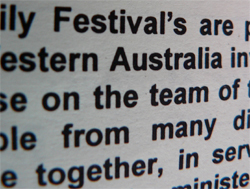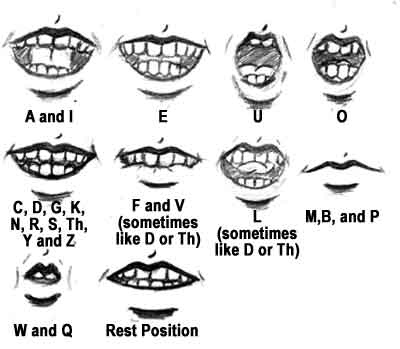
Ex SEN teacher Bob Hext is Managing Director of Crossbow Education Ltd, which he started in 1993 to publish the literacy games he was developing to help his dyslexic students with their reading and spelling. In 2005, Bob and his wife Anne designed and patented the Eye Level Reading Ruler to support children with Visual Stress. In 2006, The Eye Level Reading Ruler was runner up SEN product of the year at the BESA Educational Resources Awards. Since then Bob and Anne have worked with leading academics in the field to widen their range of Visual Stress support products, which now include A4 overlays, tinted exercise books and pads, as well as computer-related products. Bob started teaching in 1973, and has wide experience in many environments, as a class teacher, Head of Department, and SEN teacher. Bob is an experienced training provider and has spoken on various aspects of Dyslexia teaching at Conferences and CPD events over the years, including Education North in April 2011, and will be presenting the seminar “Reading Writing and Colour” at Special Needs London on Saturday 15th Sept 2011.
Crossbow are a trusted “first stop” for many SENCOs looking for “dyslexia-friendly” teaching materials for literacy, from decodable phonic readers to spelling games and handwriting resources. Their visual stress support products are now used in 60% of the schools in the UK, and are also sold in the USA through their North Carolina subsidiary, Crossbow Education Corp. Crossbow were short listed for the Supplier of the Year award at the BESA Educational Resources Awards 2011.
Facebook: www.facebook.com/CrossbowEducation

An 11 year old boy (we’ll call him Joe), in his final year of Primary School, was being tested recently for Visual Stress - the syndrome often associated with dyslexia that causes words and letters to distort or appear to “jump around” on white paper. At the time of the assessment, which puts a series of different coloured overlays on the page to tint the background colour, he was unable to blend C-A-T to make “cat”. The assessor had worked through the single colours in the test, with no significant difference between a single colour tint and white paper. He was now in the final stages of the assessment, using double overlays to deepen the tint on the page of text. When Joe was given a double blue overlay, he sat back and said: “Oh! Is that what you mean by a word? Can I start learning to read now?”
Successive governments have attempted to raise literacy standards in school, commissioning expertise to inform policy, which has resulted in such milestones as the National Literacy Strategy introduced by the incoming government in 1997, and the renewed Primary Framework of 2006, which put phonics at the heart of teaching reading. Commissioned in 2005, the Rose Review stressed that the systematic learning of synthetic phonics was crucial to the teaching of reading, and in 2007 the “Letters and Sounds” programme was launched to ensure that the appropriate material was freely available to all schools. The present government has picked up this baton and this year launched the match-funding programme, offering match-funding of up to £3,000 to all state-funded schools in England with Key Stage 1 pupils so that they can buy approved systematic synthetic phonics products and training. Following the Rose Review, Lord Adonis, then Parliamentary Under-Secretary of State for Schools and Learning, wrote in November 2007:
 According to a recent BBC press release, the state of Indiana is the latest in a succession of US states which will not require its schoolchildren to learn joined-up, or cursive, writing. The move is part of the Common Core State Standards Initiative, which aims to ensure consistency in US education and makes no mention of handwriting.
According to a recent BBC press release, the state of Indiana is the latest in a succession of US states which will not require its schoolchildren to learn joined-up, or cursive, writing. The move is part of the Common Core State Standards Initiative, which aims to ensure consistency in US education and makes no mention of handwriting.
Some critics say writing well is a vital skill for life and builds character, and that there is a link between kinaesthetic memory and spelling. Supporters of the move say that typing skills are more useful in the modern digital world, and that keyboarding develops kinaesthetic memory as well as cursive writing. But whatever is propounded by theorists, the fact is that handwriting remains an important medium for learning and communication, and is still going to be with us for quite a while.
 The government is quite right to support the teaching of systematic synthetic phonics in schools, and the forthcoming matched funding initiative for KS1 Phonics materials will be a welcome boost for many schools who need to invest in phonics resources at this level. It will also be a bonanza for the publishers who have got their programmes selected for the catalogue of approved resources to be released by ESPO later this year. However, for many of the people who really count – the children being taught, and especially those who are struggling with reading and who are therefore most at risk from educational failure – this “solution” misses the mark completely: like the nightmare scenario of a top exam candidate, it’s the right answer to the wrong question.
The government is quite right to support the teaching of systematic synthetic phonics in schools, and the forthcoming matched funding initiative for KS1 Phonics materials will be a welcome boost for many schools who need to invest in phonics resources at this level. It will also be a bonanza for the publishers who have got their programmes selected for the catalogue of approved resources to be released by ESPO later this year. However, for many of the people who really count – the children being taught, and especially those who are struggling with reading and who are therefore most at risk from educational failure – this “solution” misses the mark completely: like the nightmare scenario of a top exam candidate, it’s the right answer to the wrong question.
For many of these children, a high percentage of whom are among the dyslexic 10% of the population, the question to ask is not “Why can’t they blend the phonemes?”, but “Why can’t they see them?”. The answer is because they suffer from Visual Stress, which causes the image of the printed text on white paper to blur or appear to move around on the page. According to research from Essex University, Visual Stress may be the result of “cortical hyperexcitablity”: specific cells in the Visual Cortex over-reacting to particular wavelengths of the colour spectrum which are specific for each individual. Filtering out the wavelengths causing the problem enables the brain to “see” the words clearly.

A community-driven platform for showcasing the latest innovations and voices in schools
Pioneer House
North Road
Ellesmere Port
CH65 1AD
United Kingdom